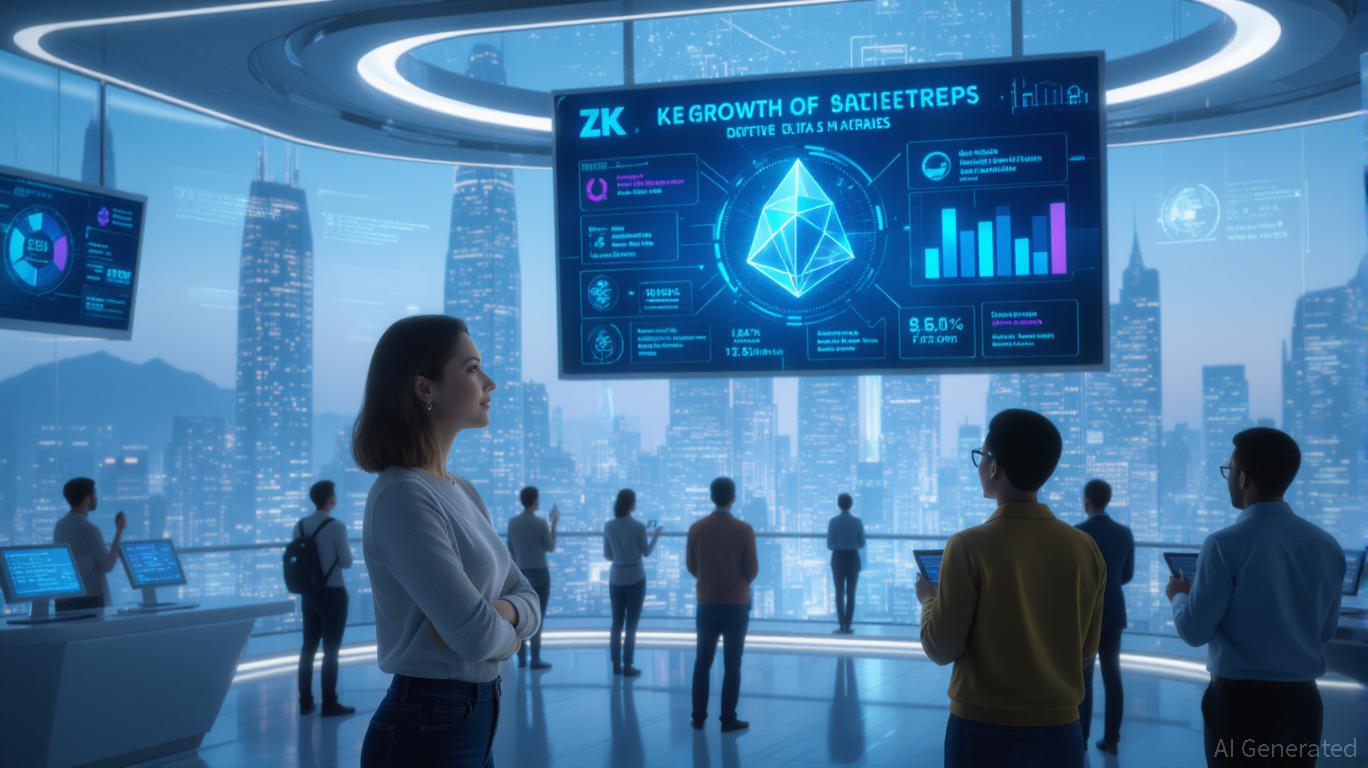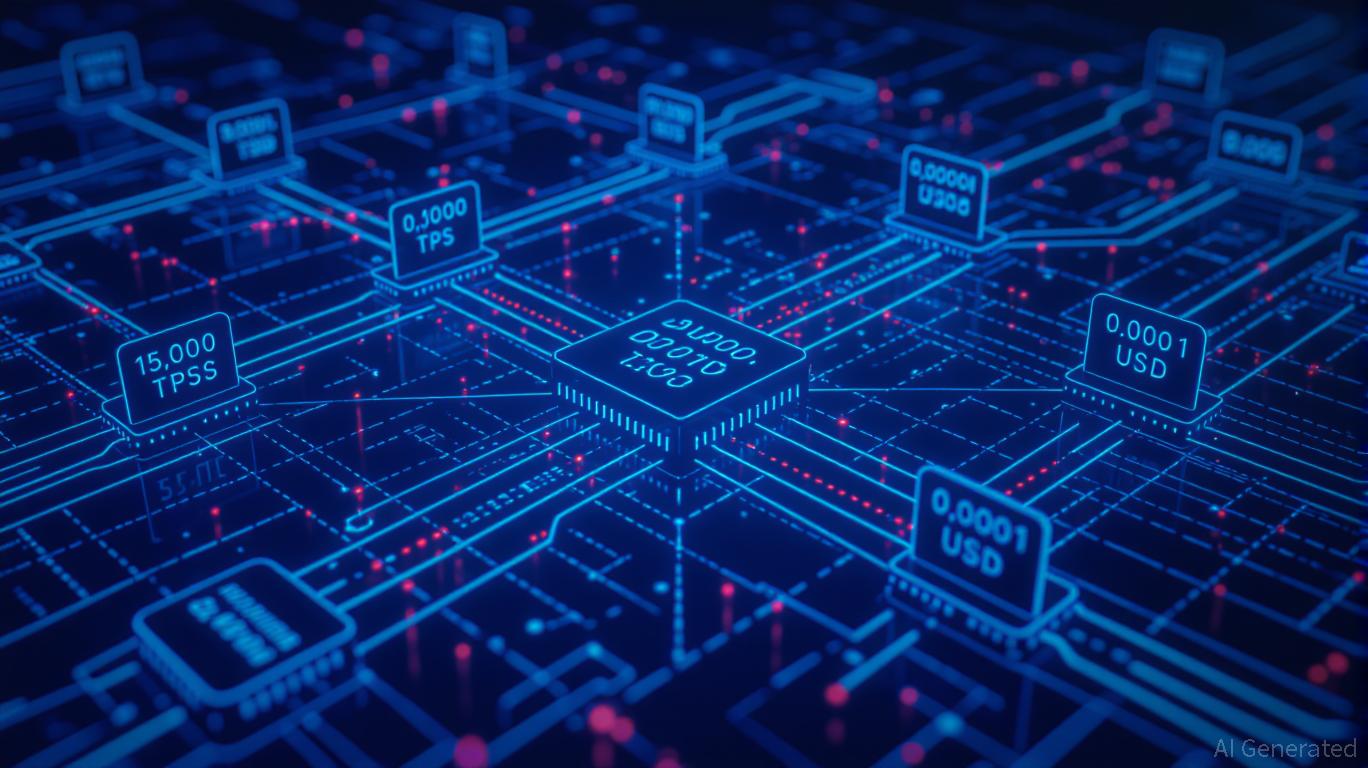Solana's Upcoming Growth: The Impact of Enhanced Scalability and Institutional Interest on SOL's Price Movement
- Solana (SOL) processed 543M weekly transactions in Nov 2025, with $29B DEX volume surpassing Ethereum's $15.9B. - Technical upgrades like Firedancer and Alpenglow boosted TPS to 65,000, sub-150ms latency, and 20% block capacity growth. - Institutional adoption surged via SEC-approved ETFs (BSOL/GSOL) and partnerships with Western Union (USDPT) and Coinbase Custody. - Analysts project SOL to reach $450-$1,000 by 2030, driven by enterprise scalability and $2B+ staked assets. - Risks include regulatory unce
Scalability Upgrades: Laying the Groundwork for Expansion
Solana’s capacity to handle more than 60,000 transactions per second (TPS) at minimal cost is the result of deliberate innovation. Between 2023 and 2025, the platform underwent significant enhancements, such as the introduction of the
The addition of

Institutional Adoption: Connecting Blockchain with Traditional Finance
While technical advancements are crucial, Solana’s recent achievements with institutions have been just as impactful. The debut of the
At the same time, Solana’s collaboration with
On the infrastructure front, the
Price Outlook: Measuring the Drivers
Market experts are showing growing confidence in SOL’s future. As of October 2025, forecasts for 2030 place SOL’s price between $450 and $680, with optimistic scenarios projecting values above $1,000, according to
The Firedancer and Alpenglow improvements are specifically identified as key growth drivers. For example, the 20% boost in block space is directly linked to a 30% annual increase in DEX activity, as stated in the Coinotag report. The Alpenglow consensus update has also drawn high-frequency trading firms seeking transaction finality under 150 milliseconds, according to the same review. Additionally, institutional adoption figures—such as $200 million in ETF inflows and $2 billion in staked assets—offer concrete evidence supporting SOL’s price growth, as detailed in the Coinotag analysis.
Risks and Challenges
No evaluation is complete without considering potential downsides. Regulatory ambiguity, especially regarding PoS staking and tokenized assets, continues to be a challenge, according to the XS analysis. Solana’s past network outages—though lessened by the Firedancer upgrade—could still occur under extreme conditions. Competition from Ethereum Layer-2 networks and other high-speed chains like
Nevertheless, Solana’s early lead in institutional collaborations and its strong technical development plan indicate these risks are manageable. The network’s adaptability—such as the integration of AI-powered analytics for decentralized applications—further bolsters its long-term prospects, according to the XS analysis.
Conclusion: A Strong Case for Long-Term Holders
Solana’s upcoming growth is less about speculation and more about the results of its technical progress and institutional momentum. With scalability improvements supporting enterprise-level operations and partnerships like Western Union’s USDPT linking blockchain with established finance, the fundamentals point toward sustained price growth over several years. For investors, the real question is no longer whether Solana can scale, but how quickly it will do so.
Disclaimer: The content of this article solely reflects the author's opinion and does not represent the platform in any capacity. This article is not intended to serve as a reference for making investment decisions.
You may also like
ZK Technology Experiences Price Spike: Advances in Blockchain Scalability and Signs of Institutional Embrace
- Zero-Knowledge (ZK) technology's valuation surged in 2025 due to blockchain scalability breakthroughs and institutional adoption, with ZK rollups achieving 15,000 TPS and $3.5B total value locked. - Platforms like ZKsync and StarkNet enabled real-world applications (tokenized assets, AI contracts) while Deutsche Bank and Sony adopted ZK for confidential settlements and digital rights management. - Ethereum's zkEVM integration and regulatory clarity via U.S. acts accelerated institutional trust, with proj

Vitalik Buterin Backs ZKsync: Igniting Ethereum Layer 2 Innovation and Ushering in the Next Era of DeFi
- Vitalik Buterin's endorsement of ZKsync's Atlas upgrade accelerates Ethereum's ZK-based scalability strategy, positioning ZKsync as a key DeFi infrastructure player. - The upgrade achieves 15,000+ TPS with near-zero fees via ZK Stack, enabling 30% stablecoin dominance and bridging Ethereum's L1-L2 liquidity gaps. - Institutional adoption surges as ZK token gains 50% post-endorsement, supported by $15B in ZK-related DeFi inflows and StarkNet's TVL tripling in Q4 2025. - Upcoming Fusaka upgrades (30,000 TP

ZK Atlas Enhancement and Its Influence on Layer 2 Scaling
- The ZK Atlas Upgrade (Oct 2025) revolutionized Layer 2 scalability with 15,000+ TPS and $0.0001/tx costs via innovations like Atlas Sequencer and Airbender prover. - Vitalik Buterin's GKR protocol reduced ZK verification costs 10-15x, slashing Ethereum gas fees by 90% and boosting DeFi competitiveness. - ZK ecosystem TVL hit $3.5B by 2025, with $15B in Bitcoin ETF investments and 60.7% CAGR projected for ZK Layer 2 market growth to $90B by 2031. - Institutional adoption accelerated as stablecoins capture

Bitcoin Updates Today: Veteran Bitcoin Holders Selling Raises Questions: Is the Market Unstable or Undergoing a Tactical Change?
- Bitcoin OG holders are accelerating sales of decade-old BTC stashes, with $1B+ moved from pre-2018 wallets in 2025. - Analysts debate motives: Erik Voorhees sees long-term adoption focus, while Willy Woo cites quantum risk mitigation and SegWit address shifts. - Price volatility intensifies as BTC struggles to reclaim $105k-$106k support, with $722M realized losses and ETF buying ($530M) failing to offset selling pressure. - Historical patterns suggest potential 15-20% corrections, with on-chain expert D
